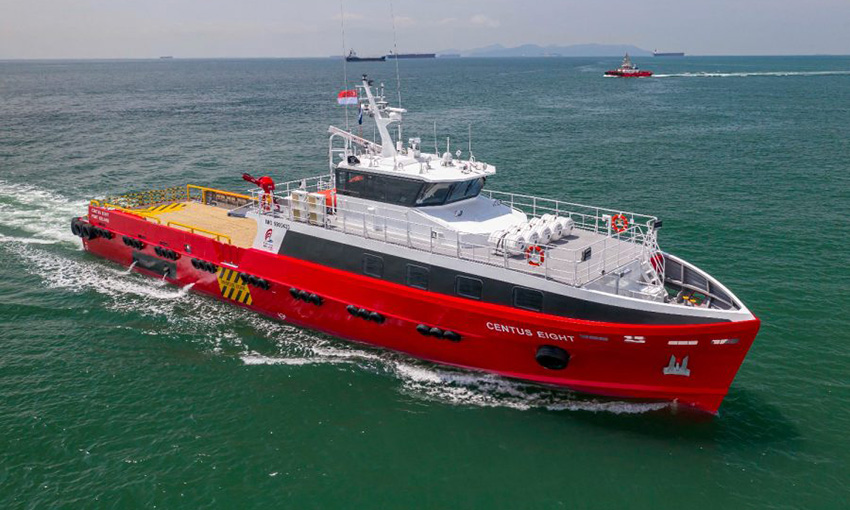A HIGHLY manoeuvrable and hydrodynamically efficient fast crew boat that was scale model tested at the Australian Maritime College was recently handed over to its new owners at a ceremony in Singapore last week.
Singapore-based shipbuilding firm Strategic Marine built the vessel, and Western Australia-based Southerly Designs designed it. And, it was tested extensively at the AMC towing tank in Launceston.
Commercial access to the towing tank and hydrodynamic experts is facilitated through the AMC’s training and consultancy division AMC Search.
Southerly Designs commissioned AMC to help verify improvements to the hull design and through two stages of tank testing, significant efficiency improvements were identified.
The initial round of tests was conducted on a physical scale model of the original design and they were designed to provide advice and baseline data on potential further improvements that could be made to the hull.
The second round included commissioning a second scale model based on the suggested improvements to the hull design.
When compared, the resultant resistance-on-displacement ratios (which can be used as a measure of the hydrodynamic efficiency of a hull) with all other similar monohull models tested at AMC (at the upper end of the tested speeds), found that the optimised hull had better hydrodynamic efficiency than any monohull of similar size ever tested at the AMC (up to that date).
The outcomes from this project have now successfully filtered through to numerous new designs for semi-planing vessels from Southerly Designs, including offshore service vessels, fishing boats and patrol vessels such as the Tasmania Police vessel Cape Wickham.
The new vessel, named Centus Eight, completed sea trials in January and received glowing feedback from the owner, according to Strategic Marine.
Designed to meet the specific requirements of oil companies, the vessel will be deployed in Malaysian waters.
The vessel is powered by three Caterpillar C32 engines driving fixed pitch propellers.
The station-keeping and manoeuvring capability are further enhanced by a tunnel thruster installed at the bow.
The vessel is equipped to carry out external fire-fighting roles by a remote-controlled water monitor with a capacity of 1200 cubic metres per hour.
The accommodation space features 16 berths in seven cabins, a large galley and mess area with a walk-in chiller and freezer to cater for a large crew with extended operational endurance. The passenger saloon offers 70 comfortable reclining seats arranged with either singles or twins in each row to provide additional space and privacy.
The aft deck has a clear area of 120 square metres. The vessel cargo fuel capacity is 70 cubic metres, and the cargo freshwater capacity is 30 cubic metres.


